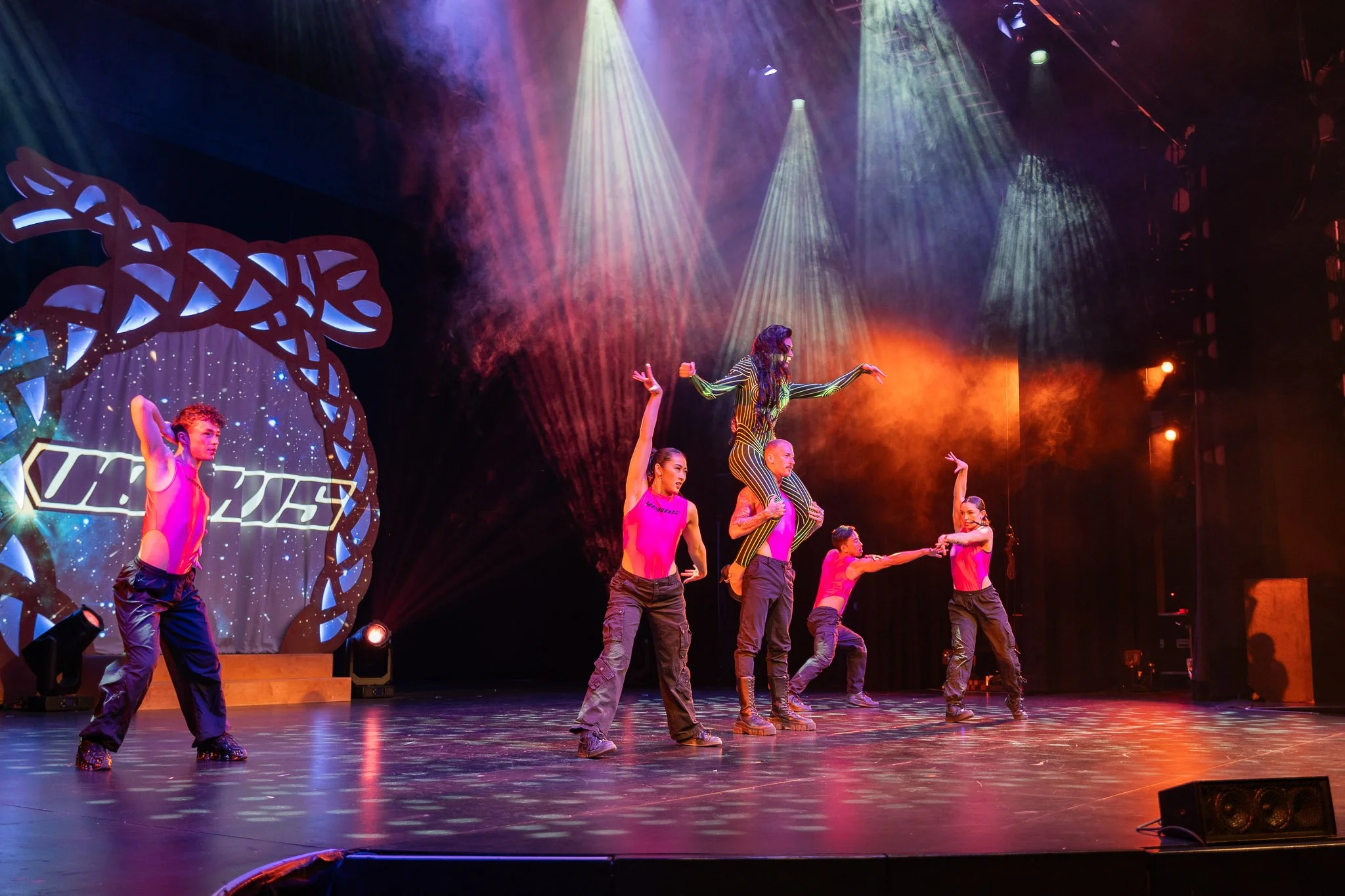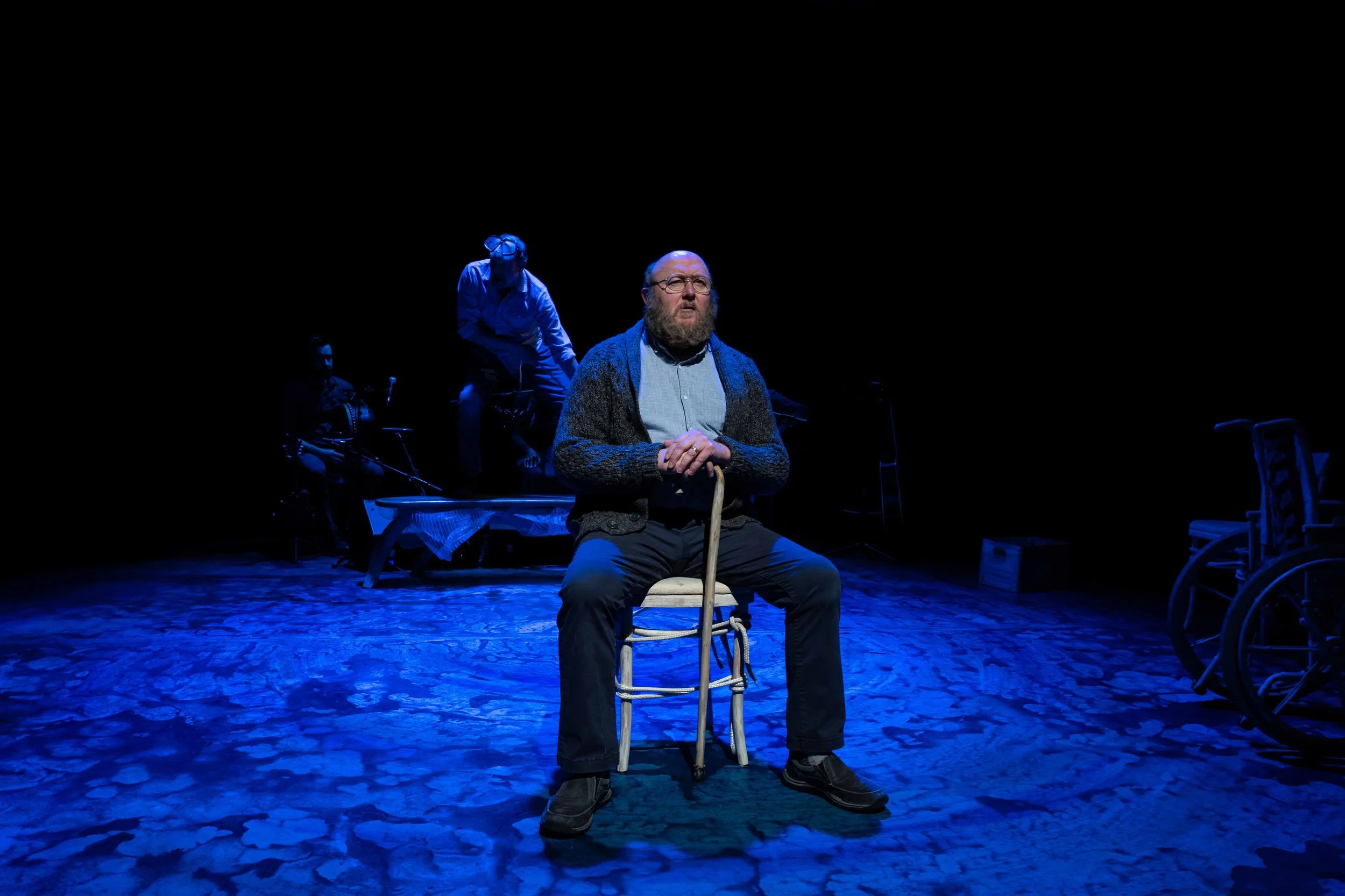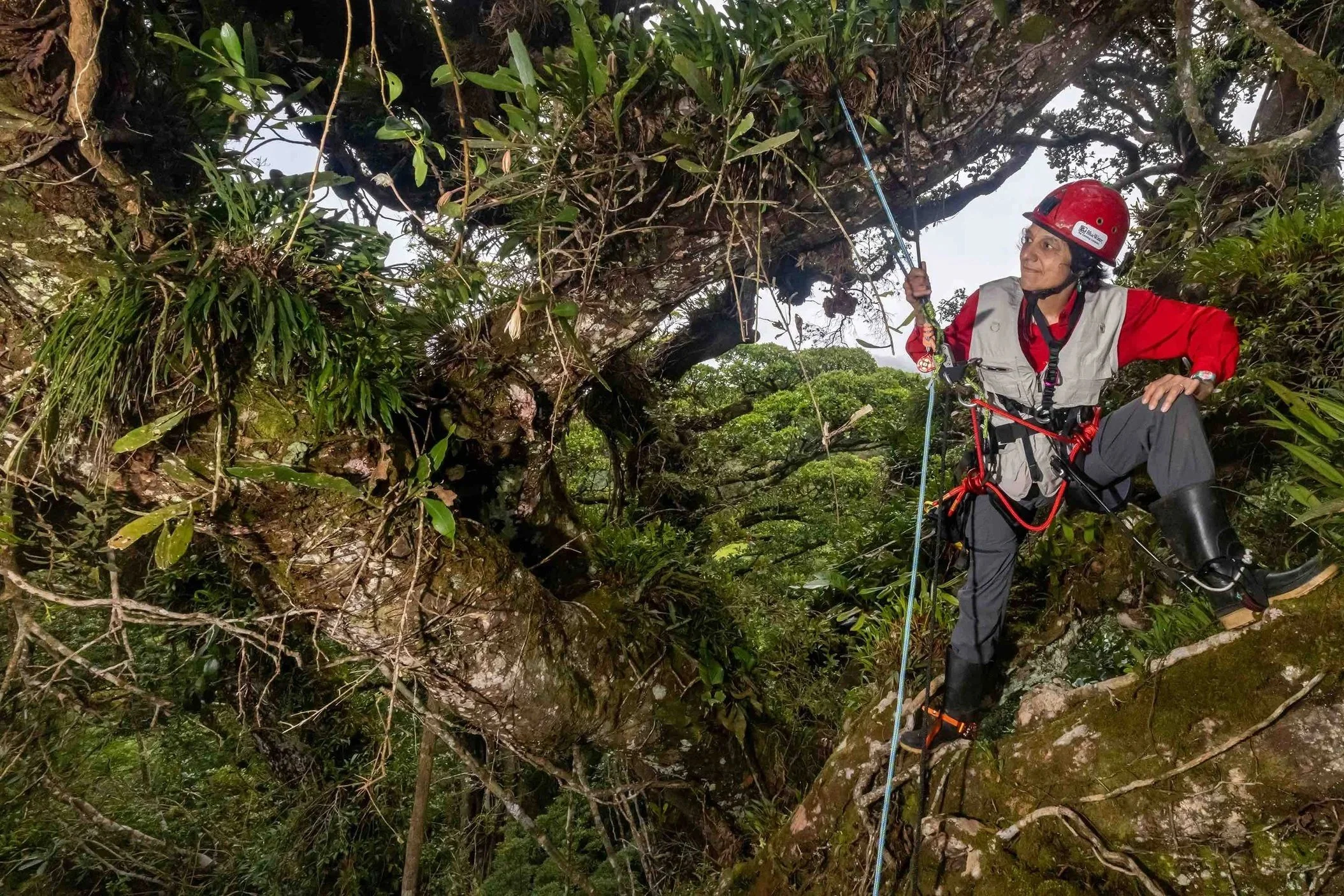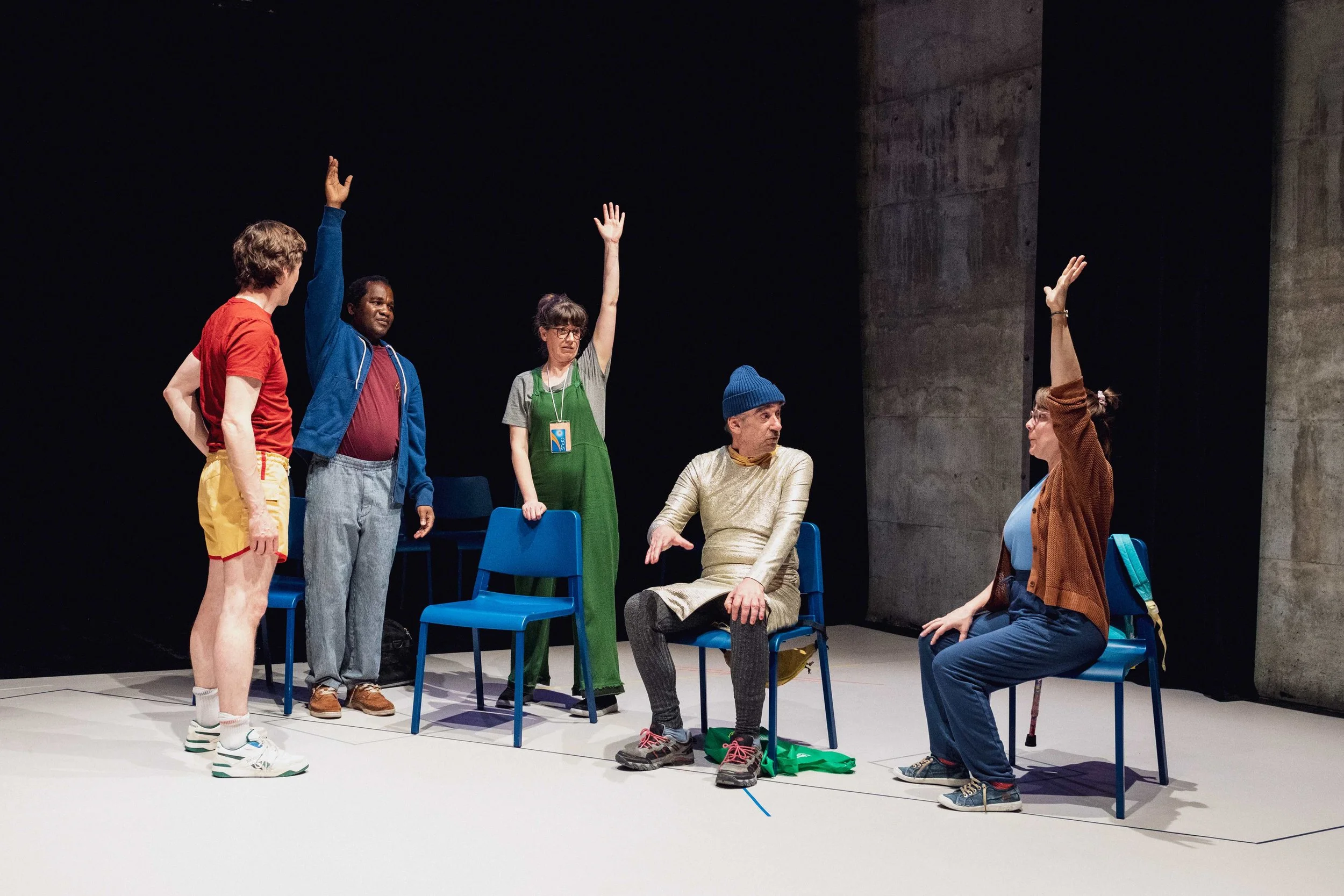Theatre review: Eyes of the Beast asks what it means to bear witness to climate disaster
Neworld Theatre in collaboration and SFU’s School for the Contemporary Arts humanizes the issue by drawing on real, lived memories of fires, floods, and heat waves
Neworld Theatre’s Eyes of the Beast. Photo by Chelsey Stuyt
Eyes of the Beast ran at the Goldcorp Centre for the Arts (Fei and Milton Wong Experimental Theatre in a Neworld Theatre production, in partnership with the Climate Disaster Project, in association with the SFU School for the Contemporary Arts, and supported by Simon Fraser University
THERE’S A LONG tradition, especially in journalism and documentary film, of thinking about storytelling as a form of “bearing witness”.
The term often refers to the role of those who stay present during or in the aftermath of disaster, war, or injustice—those who listen, record, and carry forward what others have lived through. Beyond the act of watching something happen, it means letting people speak, holding the truth of someone’s experience, and hopefully, in some way, letting it settle into your own.
That’s the kind of listening Eyes of the Beast invites. The project began at the University of Victoria through the Climate Disaster Project and has since been reimagined by Neworld Theatre in collaboration with SFU’s School for the Contemporary Arts. The stories come from people across B.C. who have lived through climate disaster—floods, fires, heatwaves. None of these events are distant or abstract. They’re lived memories, and this unsettling and poignant play doesn’t reenact them so much as give them space and shape, asking us to sit with them.
The show’s first section is built around a series of lived accounts from dozens of people. The major stories out of these focus on the Lytton fire, the Sumas Prairie flood, and the 2021 heat dome. We’re first introduced to three central voices—three survivors from these different events—who we keep coming back to. Around them, other testimonies come in flashes. We don’t get the full picture of everyone and the narrative is not always entirely linear, but it is cumulative as experiences echo and overlap, building into something larger than any single story.
The talented cast—SFU theatre students—slip into the voices of these survivors as a tightly coordinated ensemble. The testimonies aren’t delivered from behind a podium but instead come alive through gestures and shared rhythm. The language in the interviews is incredibly vivid, full of details you wouldn’t really imagine: skin flaking from heatstroke, the rancid smell of floodwater, living-room furniture bobbing like toys in water. The way the performers carry the words emotionally and physically gives them that much more urgency.
The set, projection, and lighting design all work fluidly in tandem with the actors to keep the space in near-constant, chaotic motion. Minimal furniture is reused and reimagined throughout; a rolling desk becomes a rescue boat, like the ones used by regular people to save pets during the floods. Behind it all, the screens flicker between portraits of the survivors, maps, real photos and footage (used sparingly and poignantly), moments of blackout, and washes of intense red and yellow light.
After the performance, the second and third parts of the show take place without the cast. A moderator steps onstage and opens a discussion with the audience, asking three questions: How has this play changed how you think about climate disaster? What are your own experiences? What do you think is needed to help people who live through it? The third and final section invites a policy listener to share a reflection on what they’ve just seen and heard.
An audience member pointed out how hearing these voices, uninterrupted and one after the other, hit differently than seeing disaster statistics or news coverage, and was more humanizing and layered. The events themselves might seem farflug, but the failures around them—inaction, delayed responses, economic precarity, the limits of institutional support—feel familiar. The show and everything about its structure reminds us that none of the stories are isolated.
Climate disaster is happening everywhere, all the time, which makes it strangely hard to see. It has no clear beginning or end. The crisis always feels just out of frame (until it inevitably doesn’t, of course).
Eyes of the Beast doesn’t offer easy answers, but it does leave its audience with a set of questions worth holding onto. What does it mean to bear witness to climate disaster, not just as an artist or an audience member, but as someone living on this land?
The show does suggest something in how people show up for each other in community, in care, in Indigenous stewardship, in the act of telling and receiving stories.
Near the end of the talkback, a man sitting in the front row offered this reflection: “It [the play] moved my empathy from the head to the gut.” It felt like the room fully agreed. ![]()
























